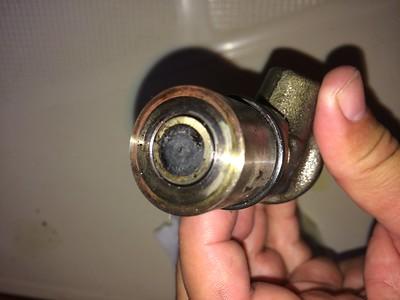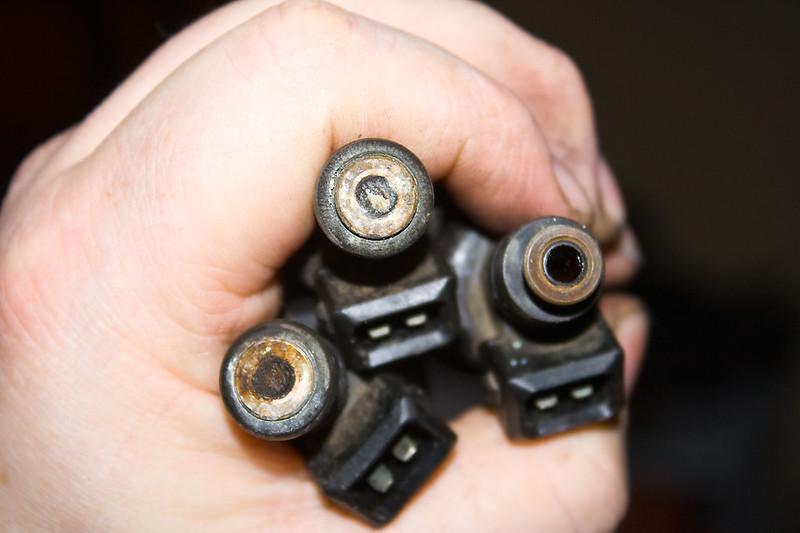PCM is considered the brain of any vehicle. It has a significant impact to improve performance and major functions. Fuel injectors in a car are a crucial component that injects fuel into the engine. It uses ECV (electronic control valves) when spraying fuel into the engine. However, each of the car components is controlled by other components like PCM, ECM, etc. But how does a PCM control fuel injectors?
The science is straightforward in this regard. The PCM (Power Control Module) sends the signals to the fuel injectors by using dedicated pins. Again, it attaches the injector pulse width on and off the ground directly to the injectors. However, fuel injectors are operated or controlled depending on the air-fuel ratio.
Anyway, if you want to know this factor more deeply, you should go through the entire article. In this article, how the PCM controls the fuel injectors will be described thoroughly.
How does a PCM Control fuel injectors: Quick thoughts

The fuel injectors are controlled by the PCM in various ways. Sometimes it widens the injector pulse and regulates the fuel pressure so that too little or too much fuel cannot enter the engine. However, all of them will be described below.
By sending signals to the Fuel injectors
In some cars, especially in the Ford, there are two dedicated pins in the PCM. These pins are used for sending signals to the fuel injectors. Different pins feed different cylinders. Even number pin (58) feeds the even number cylinder and odd number (59) feeds odd number cylinders.
Fuel injectors are generally made in two (saturated switch and peak-and-hold) configurations. In saturated switch mode, the PCM holds the injector open until the air-fuel ratio is adequate.
Also, the PCM’s injector driver opens the injector by grounding the injector circuit. This process is done mainly in negatively switched systems. On the other hand, positively switched systems are not often seen though.
In this case, the PCM injector driver opens the injector by transporting current to the injector windings. But above all, the PCM changes the injector to keep the air-fuel ratio adequate.
PCM injectors open as often as needed when excessive fuel is needed. This phenomenon occurs when the intake stroke air-fuel ratio needs to be enriched. This condition is called the asynchronous firing of the injector.
Grounding the Injectors
First, get over the idea that the PCM sends power to the injectors. It actually takes place in the ignition control circuit which comes from the ignition switch. The PCM usually grounds the injector, which helps it inject fuel into the cylinder evenly and thoroughly.
Additionally, it helps in delivering fuel to the cylinder at the correct rate by making and breaking ground numerous times per second. This makes the cylinder piston move up and down very well, which helps in keeping the engine running and working.
Adjusting the Injector Pulse
Another way the PCM controls the fuel injector is by adjusting its pulse width. By opening and closing the ground path to the fuel injector, the PCM adjusts the injector pulse width. If you are running your engine and it is at working temperature, immediately it diverts into closed-loop mode. With providing accurate fuel control, pulse width adjusts for each stroke.
So mainly, PCM regulates the air-fuel ratio and pushes them into the cylinder at the right amount. Because if adequate fuel can’t enter or inject into the cylinder, the engine can’t get proper fuel. As a result, the engine and other internal parts break down. Thus, you can’t get the expected performance from the car, let alone go for a long drive.
What Are The Other Functions Of The Pcm In A Car Besides Controlling Fuel Injectors?
The PCM does not only control the fuel injectors. It performs many functions such as control of various functions of the engine, transmission control, and all related functions. So let’s see what else it does.
- Provide necessary Data
It mainly collects information from various parts of the vehicle, especially sensors, and works in a way that works based on that information. It observes and tracks various aspects of the vehicle. This is because it connects to various sensors and gathers information.
- Controls different parts
It can control ignition timing, valve timing, air-fuel ratio, fuel injectors, fuel delivery, transmissions, turbo boost pressure, fuel pressure, etc. So it is almost impossible to drive your car with a faulty PCM unit. As the components are connected to each other and any malfunction can cause severe damage, it is wise to keep checking the PCM.
- Keep the air-fuel mixture right
Admit it or not, the proper air-fuel mixture is crucial to achieving peak efficiency and performance. Imagine, you drive your car without fuel. Is it possible? Fortunately, a well-functioning PCM helps to send the right amount of fuel to the engine. Also, it pushes the exact amount of fuel, not too rich or not too lean.
- Prevent Engine Misfire
When the power control module gets unworthy, the engine will start to misfire or backfire. So to resist misfire or backfire, PCM play a crucial role. Not only engine misfire, but also stalling, and poor performance is a bonus. But a good-conditioned PCM improves engine performance.
- On-time Start
The PCM unit assists to start timely. As it injects the fuel as per needed in the cylinder and then the engine, the engine is always competing to run. As mentioned earlier, it controls ignition timing, so the spark plug ignites immediately after starting.
As well as keeping ignition timing right, helps to decrease emissions. Rapid emissions are harmful to the environment by producing harmful fumes.
Conclusion
Undoubtedly, the PCM unit in the vehicles is vital. It collects and checks the necessary information to keep the engine and other parts running smoothly. After receiving the data, it works accordingly. Most importantly, it controls fuel delivery, and fuel pressure, and injects the right amount of fuel into the engine.
On the other hand, fuel injectors also play a crucial role to inject fuel into the engine. PCM controls the fuel injectors in a different way. Hopefully, you now know how a PCM controls fuel injectors.
Read more:

